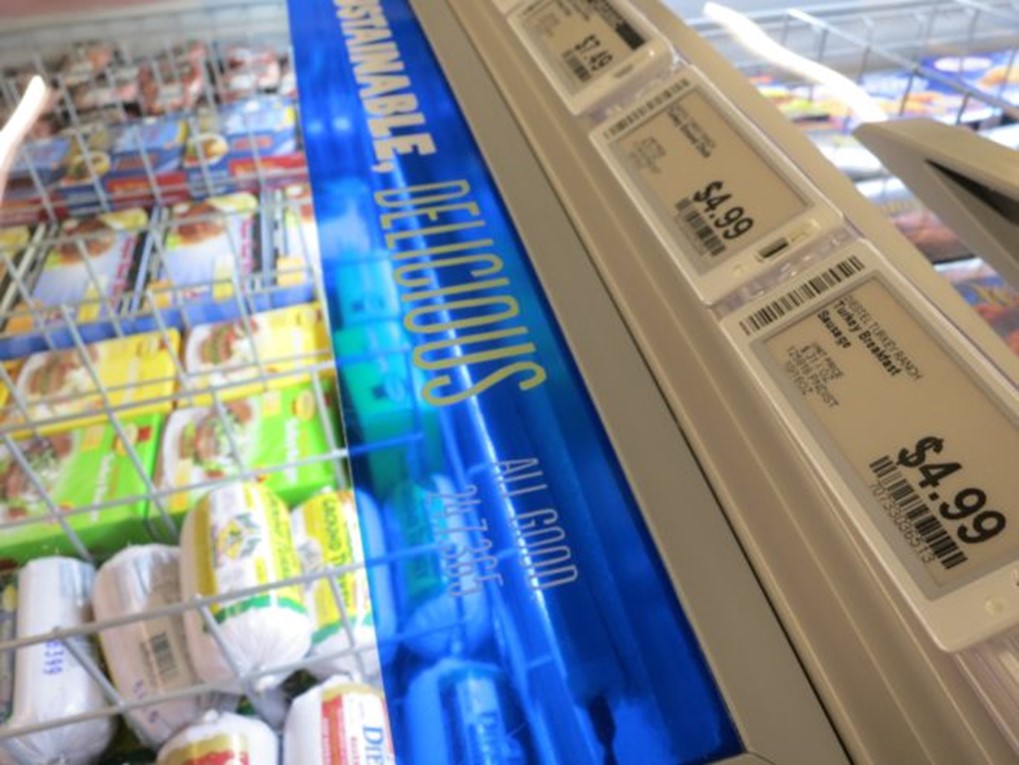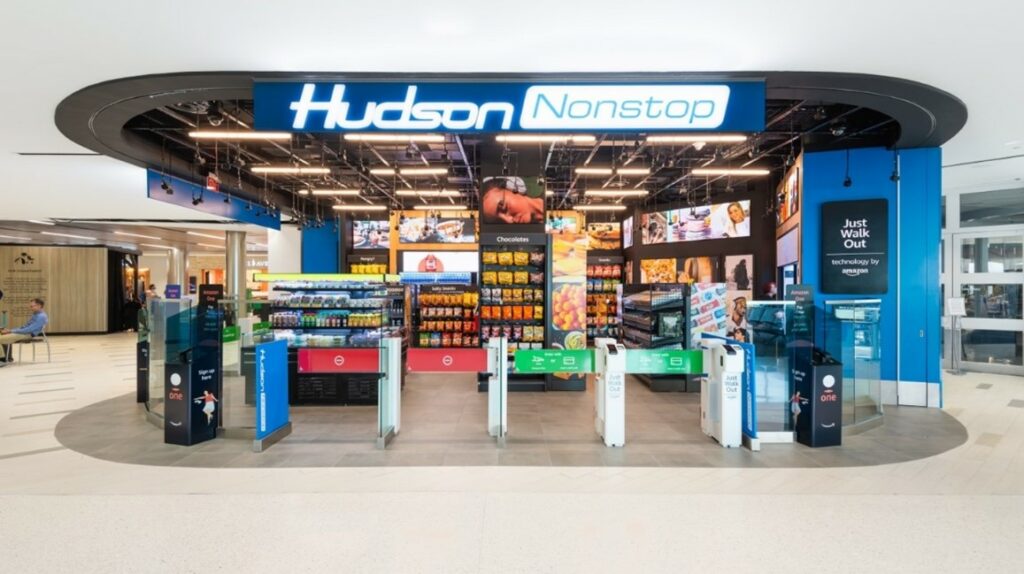Buying your weekly groceries is different now compared to how your parents bought them. Technology is driving those changes. Grocers are adapting to the rapidly changing customer demand and taking advantage of technology.
In this blog we look at the top three technology trends we have seen transform grocery store experiences in 2023.
1.Technology Transition
The honeymoon phase of online grocery is over, now it’s common practice among consumers. This has enabled grocery chains to shift to a more strategic approach with their decision making and investments.
With this shift we have seen the rise of robotic solutions as retailers continue to invest in new technology for online grocery pickup (OGP) and delivery. This will not only benefit retailers long term but consumers as well.
Efficiency and cost-effectiveness have taken a lead role in the new technology investments. Although change takes time, we are continuing to see technology advancements such as robotics in grocery stores.
Online grocery sales are hovering around $7 billion per month with curbside pickup leading over delivery. However, grocery stores continue to invest money into technology for delivery. Such technology includes robotics for online grocery fulfillment.
Retailers are continuing to put money into delivery advertising, some even offering delivery in two hours or less or drone delivery.
Technology is transitioning grocery store experiences across all areas, with delivery specifically. But don’t take our word for it, it’s likely you have the proof of this trend is in your mailbox….or inbox.

2. In-Store Experience
Grocery stores are taking different technologies into consideration as they work to improve in-store experiences for their customers. Some of these include smart cart technologies, digital price tags, self checkout and more.
Smart Carts
In the context of retail and shopping, a smart cart typically refers to a technologically enhanced shopping cart equipped with features such as RFID (Radio-Frequency Identification) sensors, digital displays, barcode scanners, and connectivity to a store’s network.
These carts can be used to provide shoppers with information about products, help them locate items in the store, offer personalized promotions, and even streamline the checkout process by allowing them to pay directly from their carts.
As retailers work to improve in store experiences, we can expect smart carts to continue to trend up in 2024.


Digital Price Tags
Digital price tags are making it to the big leagues now as we have seen them grow in popularity among grocery stores across the country.
Digital price tags are on the rise with retailers due to their ability to update pricing, promotions and even inventory in real time.
With this development grocery stores boost operational efficiency as they no longer need associates spending hours at a time changing labels. Now they have the opportunity to use them efficiently elsewhere.
Self Checkout
We have been using self-checkout lanes for years but will they remain? Large retailers are looking at this staple in an effort to cut merchandise losses. Other retailers have instead invested in technology to decrease theft and improve sales through a variety of cameras and sensors.
Many retailers have invested and installed smart video cameras all around self checkouts that are programmed to alert customers if an item is not scanned and placed in the bag appropriately. If the unscanned item is not corrected the system prevents other items from being added and an associate is alerted.
Will this be the game changing technology to prevent theft at self checkout? Only time will tell.
Just Walk Out Technology
Amazon’s ‘Just Walk Out’ technology was first tested in Seattle’s Amazon GO stores back in December of 2016. If you have yet to try it, the best analogy may be to toll roads. Remember when you were driving and had to stop and pay a toll? Now, think of your phone or the palm of your hand as the toll pass and a traditional checkout lane as the toll. Customers have the ability to walk into a store, grab what they want and walk right out without ever needing to stop at a checkout lane.


You can try the technology in Amazon stores and licensed locations such as airport travel retail stores.
Overall, streamlining processes, improving the customer experience, and gathering data are all part of the new in-store experience, this cannot be done without a thoughtful investment in technology.
3. Artificial Intelligence
You may have heard these two words on more than one occasion in 2023 and you might be wondering what is it? What does it mean? How does it affect me or the grocery industry?
AI can be utilized in numerous ways within the grocery industry to enhance operations, improve customer experiences, and optimize various processes. Here are some of the ways AI can be used in the grocery industry:
Demand Forecasting
AI can analyze historical sales data, weather patterns, seasonal trends, and other relevant factors to predict consumer demand for specific products. This can help grocery stores optimize their inventory levels, reduce waste, and ensure that popular items are always in stock.
Supply Chain Optimization
AI can be used to streamline supply chain operations by predicting optimal delivery schedules, managing inventory levels, and identifying opportunities to reduce costs and enhance efficiency.
Personalized Marketing And Recommendations
AI for grocery stores can analyze customer data providing personalized product recommendations, promotions, and offers based on individual shopping habits and preferences. This helps grocery stores improve customer loyalty and drive sales.
Inventory Management
AI-powered systems can automate inventory management processes, including tracking product expiration dates, detecting shelf stockouts, and optimizing shelf layouts to improve product visibility.

Pricing Optimization
AI algorithms for grocery stores analyze various factors such as competitor pricing, demand levels, and historical sales data to optimize pricing strategies and maximize profitability.
Customer Service And Engagement
AI-powered chatbots and virtual assistants provide customer support by answering product-related questions, and offer assistance with online orders, thus enhancing the overall customer experience.
Fraud Detection And Security
AI can help detect unusual purchasing patterns and identify potential instances of fraud, thus enhancing security measures within the grocery industry.
Autonomous Checkout
AI technology has enabled cashier-less checkout systems, where customers can simply grab items and leave the store without having to wait in line, enhancing convenience and reducing checkout times.
Overall, AI has the potential to revolutionize the grocery industry by enabling more efficient operations, personalized customer experiences, and improved decision-making based on data-driven insights.
You may want to read that again if you still wonder why so much money is being invested in AI. It is already in your daily life. AI, big data, and how they affect everything from consumer shopping behavior to inventory management will continue to evolve as we head into 2024.
Conclusion
In closing we should note that not all good things come easily or without frustration. As grocery stores continue to make advancements in technology, customers may feel the growing pains. For those of us in the industry, we must continue to embrace and appreciate the technological advancements and trust that many benefits are to be had in the long run.
Grocery stores are not the only ones investing in technology, other industries such as food service are as well. To learn how food service is prioritizing technology check out the blog our friends at Convenience Store News published, Meeting At The Intersection of Foodservice & Technology.
About KPS Global
KPS Global is the leading manufacturer of insulated panel systems for a variety of industries and applications including cold storage for grocery stores.



